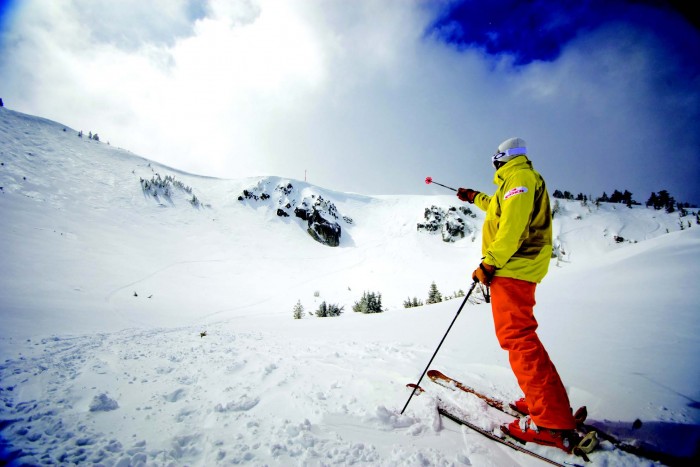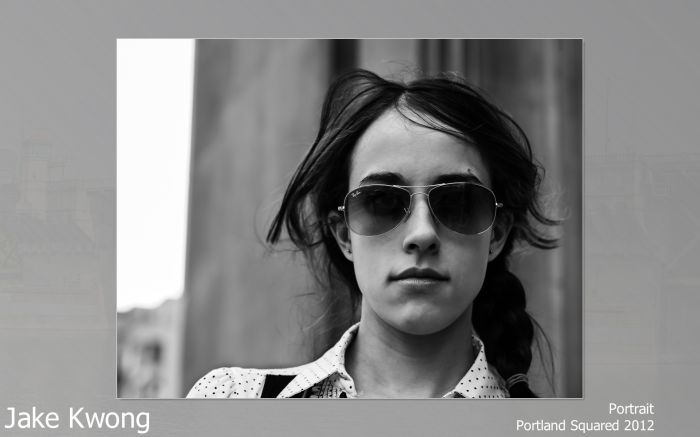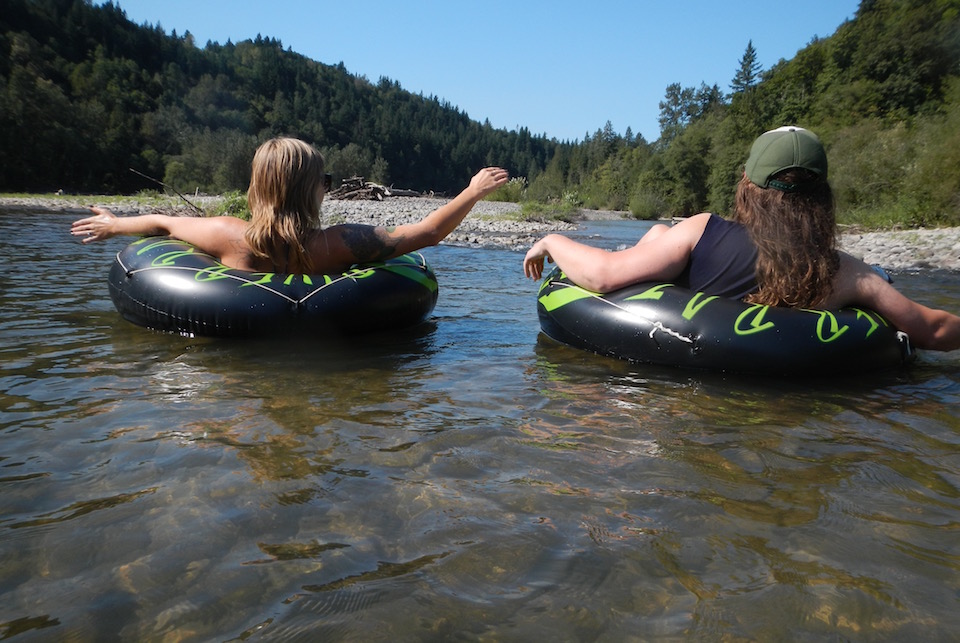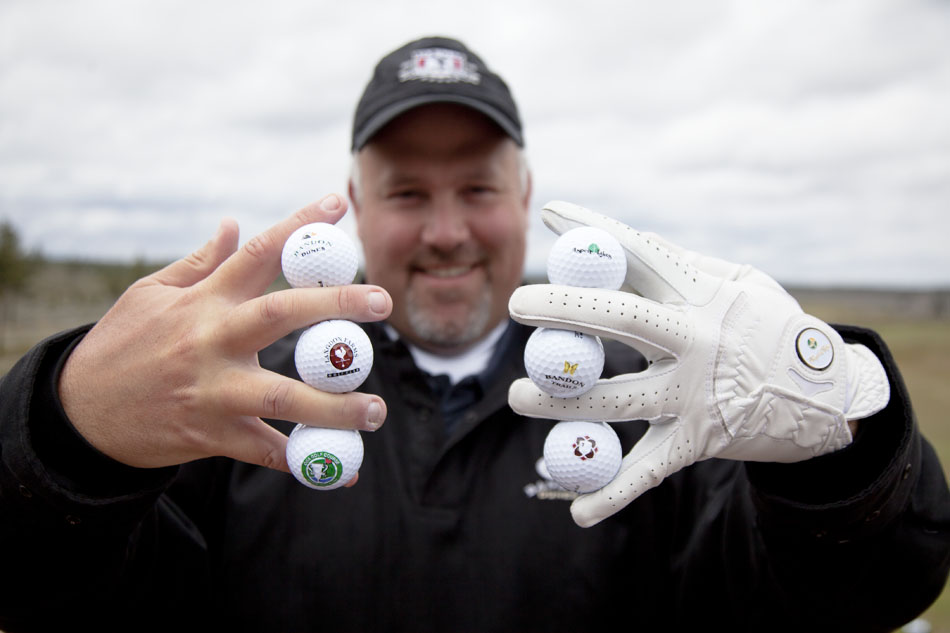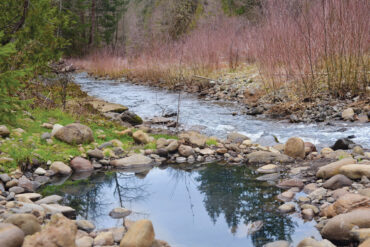Oregon’s rich snowsport history is full of larger-than-life characters and ski areas in dramatic settings. It’s a history that begins with Norwegian and Swedish loggers, arriving in the early 1900s with their cross-country skis, and spans the heyday of alpine skiing in the 1950s and 1960s to present-day snowboarders and freeriders. Along with each area’s history and statistics, we asked insiders to offer tips on how to ski and ride their local resort.
Northern Cascades
Mount Hood Meadows Ski Resort
www.skihood.com
History: The area has its beginnings in the early 1960s when the U.S. Forest Service undertook a study to see if alpine skiing would be feasible on the east side of Mount Hood. It was, and a subsequent ad seeking a party to develop the area got the attention of Portland contractor, Franklin Drake. In 1966, Drake got the go-ahead to build the ski area. They cleared slopes, and installed a t-bar and rope tow. Skiing began in December 1967 with 1948 Olympic gold medal winning skier Gretchen Fraser making the first run. Now the ski area has twelve lifts, eighty-five trails, 2,150 acres of skiable terrain, 2,777 feet of vertical drop and night skiing.
Local Knowledge: “At Meadows, the first place to go with the most vertical drop, until Cascade, Shooting Star, or Heather Canyon opens, is the 1 Bowl through 5 Bowl. Charge these lines and take advantage of dropping all the air you want,” observes Asit Rathod, an extreme skier, author of the upcoming, Writing Faces of Mount Hood-a Backcountry Guide to Mount Hood. “If you like to make super G powder turns, then ski 1 Bowl to the face and run it out to the bottom of Mount Hood Express and get all the vertical your legs can handle. If the visibility is low and you love the trees, then take a few turns into 1 Bowl and traverse to 3 Bowl or 4 Bowl for face shots all the way to the bottom. Waterfall and 5 Bowl are the best little stashes, but the vertical you lose to get to them sometimes outweighs the fresh turns you will get.
“Once the patrol has done the control work and Heather Canyon opens, it is time to really see what Meadows has to offer. Places that used to be out of bounds and lead to immediate pass privileges being revoked are now the hot spots that everyone loves to talk about in the bar. Jack’s Woods, God’s Wall and S&R Cliffs are the places dreams are realized. … Remember to ski with a partner, bring avalanche equipment (know how to use it) and probe all your landings when in these areas.”
Timberline
www.timberline.com
History: During the construction of the now-famous Timberline Lodge by the Works Progress Association (WPA) between 1936 and 1938, planners started considering skiing as the primary focus for lodge guests during winter. Timberline operators put a portable rope tow in service in 1938, and, in 1939 erected the Miracle Mile chairlift. Today 1,400 acres of skiable terrain are served by seven lifts. Timberline’s 3,680-foot vertical drop is rivaled by only a few other ski areas in the West.
Local Knowledge: Talk about insiders, Henry Bendinelli has been skiing Timberline for seventy-three wonderful years, and, at 88, is still, in his own words, “ripping it up.”
“Timberline has easily the best beginner run in America in the West Lag Road,” says Bendinelli. “It’s two miles of gentle sloping terrain with no surprises. This allows new skiers to feel comfortable and learn to turn.
“For advanced skiers, I suggest getting a partner and, after signing out as climbers, go to the top of the Miracle Mile, turn left (west) and stay as high as you can before heading down Sand Canyon. The canyon is a magnificent natural half-pipe.
“Another Timberline must-do is heading east from the top of the Miracle Mile and skiing over to and
down White River Canyon. It’s twice as deep as Sand Canyon and has easy access back to the day lodge.”
Mt. Hood Skibowl
www.skibowl.com
History: Skibowl has a long and rich history dating back to 1928, which makes its one of the oldest ski resorts in the country. The ski area began as two separate resorts Skibowl and Multorpor. While Skibowl’s name was derived from the natural shape of its Upper Bowl, Multorpor’s name came from the combination Multnomah County, Oregon and Portland. Today the area offers 960 skiable acres with sixty-five runs (thirty-four fully lit), a vertical drop of 1,500 feet, two terrain parks, and the Winter Snow Tube and Adventure Park.
Local Knowledge: “The terrain is some of the best around—gentle slopes for the beginners and intermediates and plenty of steeps for experts,” offers Matt Greenslade, a retired Portland fireman, longtime volunteer ski coach, and six-decade skier at Skibowl. The grooming is tops, but on a good powder day, the skiing and riding are as good as it gets.
“If you like going fast and catching some air, hit the Upper Bowl. The Lower Bowl and the Multorpor side (Ski Bowl East) offer a variety of slopes for everyone to enjoy including terrain parks for tricks.
“Probably the biggest change in recent years has been the growth of Government Camp. With all the new lodging, a skier or rider can walk or catch the bus and be at the area in minutes. And with night-skiing, I never get tired of skiing at Skibowl.”
Central Cascades
Mt. Bachelor
www.mtbachelor.com
Local Knowledge: The dream of World War II U.S. Army Tenth Mountain Division veteran Bill Healy, Mount Bachelor (known as Bachelor Butte until 1983) was opened December 19, 1958 with a rope tow and poma lift. Today the resort has 3,000 acres of skiing with seventy-one runs served by seven express lifts, three triple chairlifts, a terrain park, a tubing run and three day lodges.
History: “I grew up skiing and riding Mt. Bachelor back when we all scrambled to come up with secrets for making a perfect day on the mountain,” says Kris Jamieson, former two-time overall national pro snowboard champion and current marketing manager for GoPro cameras.
“Now with Bend’s population so big and so many more people enjoying the mountain, most of the secrets are known. But one surefire trick is to have a good full array of equipment with you when you come to the mountain so you’re ready for anything. When the powder is really deep, I grab my snowboard. When the groomers are in prime shape, I get on a pair of GS alpine race skis and lay down some arced turns. If the weather conditions aren’t the best, I ski into the nearby wilderness on my alpine touring gear to bag a peak or camp. When conditions are truly ‘down’ on the mountain or in the backcountry, I simply break out the cross-country skate gear and hit the tracks. Bachelor is about variety, and being able to do all these different disciplines makes it special.”
Willamette Pass Resort
www.willamettepass.com
History: It wasn’t long after State Highway 58 was pushed through the Willamette Pass in 1936 that skiers began looking around for a suitable place for an alpine ski area. The resort was opened in 1941 with a t-bar and two rope tows. Today 555 acres of terrain and 1,563 feet of vertical are served by seven lifts including a milelong, six-passenger chair.
Local Knowledge: “The secret at Willamette Pass is neither all the fun groomers, nor the great tree runs, nor the good powder on the backside of the mountain where I like to drop off under the lift,” claims Eugene restaurant operator, Kim Sawyer, who takes every Thursday off during ski season. “The secret is also not the high-speed lift on the front side of the mountain that takes me to my favorite run, Upper Rosary to Lower Rosary. No, the secret is Thursdays. Since the area is closed Monday through Wednesday, any snow that falls from 4 p.m. on Sunday until 9 a.m. on Thursday is there to lay down fresh tracks. There’s very little competition for the new snow.”
Hoodoo
www.hoodoo.com
History: Central Oregon’s oldest ski area, Hoodoo was created by Bend resident Ed Thurston in the 1940s. Thurston sold the area in the 1960s to the Hoodoo Ski Bowl Developers who, in 1999, sold the area to Eugene real estate holdings and campground operator Chuck Shepard. The area boasts 806 acres of skiable terrain, 1,035 feet of vertical drop, five chairs, two rope tows and a special lift for innertubing. There’s lighted skiing on Friday and Saturday nights. Hoodoo is also becoming well-known for welcoming adaptive skiers with disabilites and for it’s innovative rentals of ski bikes that offer a new mode for making sick turns.
Local Knowledge: “Moving to Sisters from Colorado with its mega ski areas, I had low expectations for Hoodoo,” notes Jason Larmore who works at the Eurosports bike and ski shop in Sisters. “But once I started skiing there, I found the area has a surprising amount of terrain to keep things interesting even for experts. If you ski during the week on a powder day, you’ll find fresh lines even into the afternoon. Mid-week lift lines are non-existent. Whether you prefer tree lines or big GS turns, you can find them at Hoodoo. One of my favorite runs when the snow is good is to ski around the backside from the summit on Over Easy towards the Hodag lift. Before you get to the lift, you can plunge down some steep, ungroomed slopes that take you through perfectly spaced small pines before veering right to the bottom of Hodag. It’s a rush.”
Blue Mountains
Anthony Lakes Ski Area
www.anthonylakes.com
History: Skiing started on an informal basis in the 1940s with a rope tow, and plenty of volunteers from the Anthony Lakes Playground Association and the Evergreen Ski Club. World War II intervened and what skiing there was just thirty-five miles west of Baker City halted until the late ’40s only to start up and then close again. In 1962, the state took over plowing the road to the lakes area, and alpine skiing has been a local staple ever since. The area has three lifts, 1,100 acres of ski-able terrain comprised of twenty-one runs, a base lodge elevation of 7,100 feet and 300 inches of annual snowfall. Local ownership debuts this season at Anthony Lakes after Baker County commissioners voted unanimously this summer to take over ski area operations.
Local Knowledge: “If one is lucky enough to be there on a half price Thursday, and it is a bluebird day following snowstorms, you will know why local skiers love this little family resort,” says Greg Hebard, coowner of Blue Mountain Sports in La Grande. “With the elevation and high desert proximity, powder snow is almost taken for granted. With no high-speed lift, a skier can make fresh tracks nearly all day, and the seven-minute ride to the top allows you to take in the remarkable northeast Oregon scenery.
“On the lift by 9 a.m. Ski the faces for the first hour, then move to the east, either hike just out of bounds past Starbottle towards Poster Ridge, or ski the trees between runs. The east side of the area hides many stashes and steep pitches that you will be discovering and rediscovering all day.
“Once you cry uncle and feel the need to call it a day, join the locals for a glass of Tumble Off Pale Ale in the Starbottle Saloon. A true piece of history, as the wall is adorned with its namesake, a piece of memorabila from the film ‘Paint Your Wagon’ that was filmed at the area.”
Southern Cascades
Mt. Ashland
www.mtashland.com
History: The highest point in the Siskiyou Mountain Range and a popular backcountry destination in the 1950s, Mt. Ashland became a ski area in 1963 when a day lodge and a lift were constructed. The area went through several changes of ownership, and between 1983 and 1991, new lifts and lights for night skiing were added. In 1993, the ski area came under community ownership through donor-restricted contributions and a grant from the Oregon Economic Development fund. There are 200 acres of terrain laced with twenty-two trails. Lighted night skiing occurs on Thursday and Friday evenings.
Local Knowledge: “Be ready to enjoy steep terrain and a lot of variety,” offers Tony Boom, an Ashland-based freelance writer and avid skier. “From the top of Aerial chair, the highest point on the mountain, Dream and Caliban are great groomers. There are plenty of options for offpiste skiing in Bowl’s four chutes and seldom-groomed Upper Tempest and Pistol. Undeveloped terrain can be explored from Aerial either west of Bowl, to the east of Balcony or on the south side.
“Lower Tempest off of Windsor chairlift is the place to be on stormy, windy days. Bottom and Winter are treeprotected. If high winds close Aerial, you can access Pistol and lower Dream through the trees by going right off the Windsor chair and staying high.
“Beginners chair Sonnet is worth a ride just for the views, even more so during twilight skiing with the lights of cities below and the lighted ski area to the west.”


